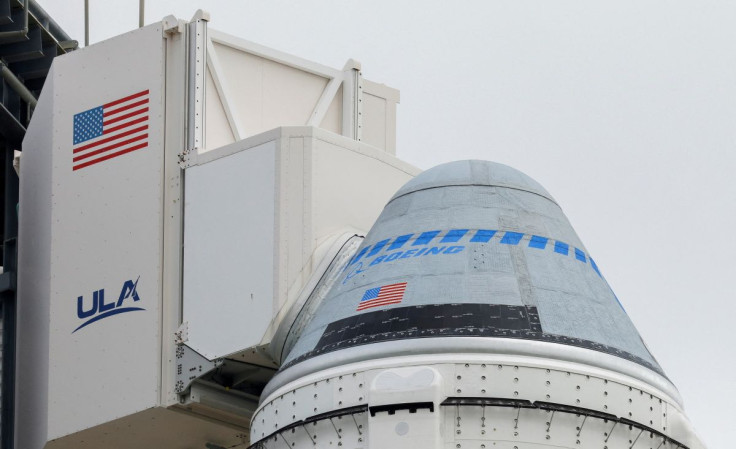Boeing's Starliner Capsule Nears Rendezvous With Space Station In Uncrewed Test

Boeing's new crew capsule Starliner neared a rendezvous in orbit on Friday with the International Space Station (ISS), a day after launching successfully on a highly anticipated do-over test flight without astronauts aboard.
The gumdrop-shaped CST-100 Starliner was due to arrive at the space station at about 7:10 p.m. EDT (2310 GMT) for docking with the orbital research outpost 24 hours after liftoff from the Cape Canaveral U.S. Space Force Base in Florida.
The capsule was lofted to orbit atop an Atlas V rocket furnished by the Boeing-Lockheed Martin joint venture United Launch Alliance (ULA). Starliner reached its intended preliminary orbit 31 minutes later despite the failure of two onboard thrusters.
After Boeing engineers convened with NASA officials on Friday to greenlight Starliner's approach to the station, the company said the two failed thrusters posed no risk to the rest of the spaceflight.
Boeing added that it was monitoring some unexpected behavior detected with Starliner's thermal-control system, but that the capsule's temperatures remained stable.
"This is all part of the learning process for operating Starliner in orbit," Boeing's mission commentator Steve Siceloff said on a live NASA webcast.
Much is riding on success of the mission, after an ill-fated first test flight in late 2019 nearly ended with the vehicle's loss following a software glitch that effectively foiled the spacecraft's ability to reach the space station.
Subsequent problems with Starliner's propulsion system, supplied by Aerojet Rocketdyne, led Boeing to scrub a second attempt to launch the capsule last summer.
Starliner remained grounded for another nine months while the two companies sparred over what caused fuel valves to stick shut and which firm was responsible for fixing them, as Reuters reported last week.
Boeing said it ultimately resolved the issue with a temporary workaround and plans a redesign after this week's flight.
A success is seen as pivotal to Boeing as the Chicago-based company scrambles to climb out of successive crises in its jetliner business and its space-defense unit. The Starliner program alone has cost nearly $600 million in engineering setbacks since the 2019 mishap.
If all goes well with the current mission, Starliner could fly its first team of astronauts to the space station as early as the fall.
For now, the only passenger was a research mannequin, whimsically named Rosie the Rocketeer and dressed in a blue flight suit, to collect data on crew cabin conditions during the journey, plus 800 pounds (227 kg) of cargo to deliver to the space station.
The research platform is currently home to a seven-member crew - three NASA astronauts, a European Space Agency astronaut from Italy and three Russian cosmonauts.
A successful mission will move the long-delayed Starliner a major step closer to providing NASA with a second reliable means of ferrying astronauts to and from the space station.
Since resuming crewed flights to orbit from American soil in 2020, nine years after the space shuttle program ended, the U.S. space agency has had to rely solely on the Falcon 9 rockets and Crew Dragon capsules from Elon Musk's company SpaceX to fly NASA astronauts.
Previously the only other option for reaching the orbital laboratory was by hitching rides aboard Russian Soyuz spacecraft.
© Copyright Thomson Reuters 2024. All rights reserved.





















